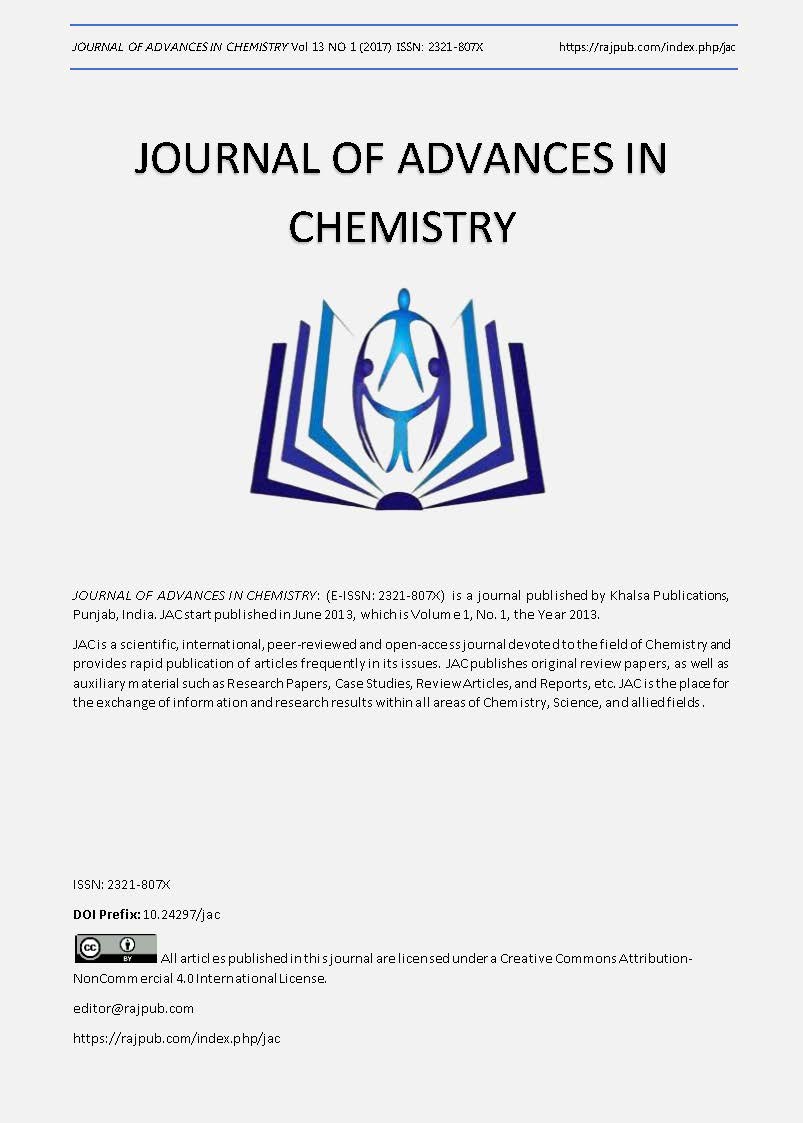Investigation of using bleaching earth and activated carbon mixturein sunfloweroilrefining
DOI:
https://doi.org/10.24297/jac.v13i12.5972Keywords:
sunflower oil; bleaching, bleaching earth; activated carbon; polycyclic aromatic hydrocarbons (PAHs)Abstract
Adsorption is one commonly used technique for treatment of sunflower oil. In this study, activated carbon and bleaching earth as a bleaching agent mixed with certain proportions and1% of the mixture added to sunflower oil in the bleaching process. The combination of bleaching earth and activated carbon produced higher adsorption capacity than the single bleaching earth. This article focuses more particularly on heavy metals and polycyclic aromatic hydrocarbons (PAHs) removal. It was detected that, the mixture is an excellent adsorbent in the adsorption of PAHs and metals from sunflower oil with the highest adsorption capacity. The results showed that, the adsorption of metals and PAHs depend strongly on activated carbon and decreased with increasing activated carbonin mixture and the maximum adsorption was reached after using B5 (95 % bleaching earth and 5 % activated carbon combination).
Downloads
References
2.R. E. Wainwright, in Y. H. Hui, ed., Bailey’s Industrial Oil and Fat Products 5th ed., Vol. 3, Wiley, New York, 1996, pp. 353–408.
3. Physical and Chemical Characteristics of Oils, Fats and Waxes, in Official Methods and Recommended Practices of the American Oil Chemists’ Society, AOCS Press, Champaign, Illinois, 1997.
4.T. Wang, in F. D, Gunstone, ed., Vegetable Oils in Food Technology, Blackwell Publishing, Oxford, U.K., 2002, pp. 18–58.
5. M. K. Gupta, in F. D. Gunstone, ed., Vegetable Oils in Food Technology, Blackwell Publishing, Oxford, U.K., 2002, pp. 128–156.
6.Rohani B. M. Z., Madia N.A.M. and Madya M. K.A, (2006), Process design in degumming and bleaching of Palm oil. UniversityTechnology Malaysia
7. P. Transfeld: Counter current system cuts bleaching cost. INFORM 7 (1996) 756.
8.Amuda, O. S.; Giwa, A. A. and Bello, I. A.: Removal of heavy metal from industrial wastewater using modified activated coconut shell carbon. Biochem. Eng. J., 2007, 36, 174–181
9. Berbesi R., (2006), Achieving Optimal Bleaching Performance, Oil Mill Gazetteer, 112,2-6.
10. B. Ostrich´-Matijasevic´, J. Turkulov, And D. Karlovic´: Quality of Sunflower Oil Bleached during Deodorization. J. Am. Oil Chem. Soc. 57(1980) 323.
11. Gemeinschaftsarbeiten der DGF, 117. Mitteilung: Dämpfung von Speisefetten und -ölen zur Desodorierung und Entsäuerung VII. Fat Sci. Technol. 92(1990) 459–463.
12. Ademiluyi, F. T.; Amadi, S. A. and Amakama, N. J.: Adsorption and treatment of organic contaminants using activated carbon from waste Nigerian Bamboo. J. Appl. Sci. Environ. Manage, 2009, 13 (3), 39 - 47.
13. Bansal R.C. & Goyal M. (2005) “Activated Carbon Adsorptionâ€, Taylor & Francis, Boca Raton.
14. G. Biernoth, H. E. Rost: The Occurrence of Polycyclic Aromatic Hydrocarbons in Coconut Oil and their Removal. Chem. & Ind. 1967, 2002; Vorkommen polycyclischer aromatischer Kohlenwasserstoffe in Speiseölen und deren Entfernung. Arch. Hyg. 152/3(1968) 238–250.
15. Ahn, C. K.; Kim, Y. M.; Woo, S. H. and Park, J. M.: Removal of cadmium using acid-treated activated carbon in the presence of nonionic and/or anionic surfactants. Hydrometallurgy, 2009, 99, 209–213.
16. Chen, J. P. and Wu, S.: Acid/base-treated activated carbons: characterization of functional groups and metal adsorptive properties. Langmuir, 2004, 20, 2233–2242.
17.AOCS Official Method Cc 8f-91. Official and Tentative Methods of the Am. Oil Chem. Soc., Champaign, IL (USA).
18. Sahan, Y., Basoglu, F., & Gucer, S. (2007). ICP-MS analysis of a series of metals (Namely: Mg, Cr, Co, Ni, Fe, Cu, Zn, Sn, Cd and Pb) in black and green olive samples from Bursa, Turkey. Food Chemistry, 105, 395–399.
19. ISO 22959:2009 (2012). Animal and vegetable fats and oils -Determination of polycyclic aromatic hydrocarbons by on-line donor-acceptor complex chromatography and HPLC with fluorescence detection.
20. van Stijn, F.; Kerkhoff, M. A.; Vandeginste, B. G. Determination of Polycyclic Aromatic Hydrocarbons in Edible Oils and fats by On-Line Donor-Acceptor Complex Chromatography and High-Performance Liquid Chromatography with Fluorescence Detection.J. Chromatogr., A1996, 750, 263–273.
21. Cejpek, K., Hajslova, J., Kocourek, V., Tomaniova, M., Cmolik, J., 1998. Changes in PAH levels during production of rapeseed oil.Food Addit.Contam. 15, 563–574.
21.European Commission, 2006. Commission Regulation (EC) No. 1881/2006 setting maximum levels of certain contaminants in foodstuffs. Off. J. Eur. Union L364/5-24.
22.European Commission, 2002. Opinion of the Scientific Committee on Food on the risks tohuman health of Polycyclic Aromatic hydrocarbons in food.
Downloads
Published
How to Cite
Issue
Section
License
 All articles published in Journal of Advances in Linguistics are licensed under a Creative Commons Attribution 4.0 International License.
All articles published in Journal of Advances in Linguistics are licensed under a Creative Commons Attribution 4.0 International License.




